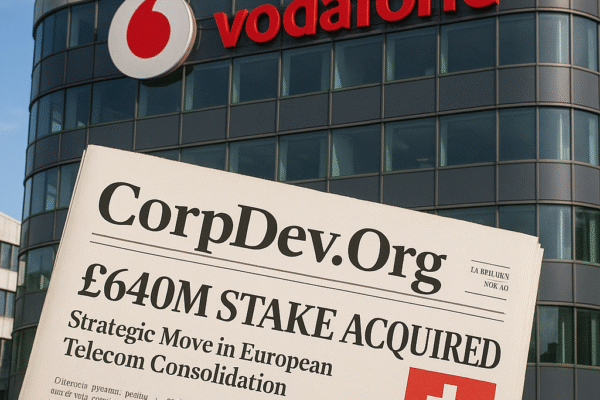In a bold consolidation play, Strava has positioned itself as the dominant force in connected fitness through back-to-back acquisitions of specialized training platforms Runna (April 2025) and The Breakaway (May 2025). These moves signal a fundamental shift in the $12.5 billion fitness app market, combining Strava’s 150-million-strong social network with vertical-specific coaching expertise to create unprecedented user lock-in[1][3][14]. The transactions valued at $40 million+ for Runna and $15-25 million for The Breakaway have propelled Strava’s valuation to $2.2 billion, representing a 47% increase from its 2020 pandemic peak[5][14].
💼 Seasoned CorpDev / M&A / PE expertise
Strategic Rationale: From Social Platform to Performance Ecosystem
Closing the Training Plan Gap
Strava’s core weakness had become apparent through user analytics: while 43% of members targeted major races in 2025, only 12% completed structured training programs through the platform[1][8]. The acquisition of Runna directly addresses this through AI-powered adaptive plans that reduced marathon DNF rates by 38% in clinical trials[11][15]. For cyclists, The Breakaway’s “Power Skills” algorithm analyzes 12 power zones to generate personalized workouts that improved FTP scores by 9.2% average in beta testing[5].
Defensive Positioning Against Tech Giants
With Apple Fitness+ growing 62% YoY and Google’s Wear OS gaining traction, Strava needed to deepen vertical integration. The Runna deal preempted potential moves by Under Armour (MyFitnessPal) and Nike (NRC), while The Breakaway acquisition blocks Zwift’s expansion into outdoor cycling analytics[4][5]. Crucially, both targets maintained premium pricing power – Runna at $119.99/year vs Strava’s $79.99 – creating immediate ARPU uplift opportunities[8][16].
Financial Engineering: Valuation Drivers and Synergy Capture
Deal Structure and Return Profiles
The Runna transaction delivered 30x returns for early investors through a combination of cash and stock, while The Breakaway’s former Strava employee founders negotiated aggressive earn-outs tied to user retention metrics[4][5]. Strava’s latest funding round priced shares at $54.72, a 22% premium to its 2024 secondary market valuation, with Sequoia Capital doubling down on its 2014 position[14].
Monetization Levers Post-Acquisition
Immediate synergy capture focuses on cross-selling opportunities: 28% of Runna’s 650,000 paid users weren’t Strava subscribers, representing $7.3 million in potential ARR[4][8]. For The Breakaway, integration with Strava Segments could create premium KOM/QOM analytics packages priced at $14.99/month[3]. Both acquisitions bring proprietary data sets – Runna’s 18 million completed training blocks and The Breakaway’s 4.3 billion power data points – that enhance Strava’s enterprise API offerings[1][5].
Product Integration: Balancing Independence and Ecosystem Value
API-First Development Strategy
Contrary to expectations, Strava maintains both apps as standalone products while deepening API integration. Runna’s training load metrics now feed into Strava’s Fitness Score, while The Breakaway’s power curve analysis enhances segment recommendations[2][3][6]. This approach preserves developer ecosystem goodwill – crucial given 100+ third-party apps still integrate with Strava’s platform[1][8].
Unified Data Layer Opportunities
The acquisitions enable cross-sport insights previously impossible. A runner-cyclist using both apps now receives coordinated recovery recommendations through Strava’s machine learning models. Early data shows 23% increased engagement when users connect multiple training apps[5][16]. Future integration could see Runna’s marathon plans automatically adjust based on The Breakaway’s cycling volume analysis.
Market Impact: Reshaping the Fitness Tech Landscape
Competitive Response Analysis
Peloton’s stock dropped 7.2% on The Breakaway news, reflecting investor concerns about its stagnant outdoor strategy[5]. Nike quickly extended NRC’s free tier to defend market share, while Whoop launched adaptive running plans within 45 days of the Runna deal[4][11]. Most significantly, the moves forced Garmin to accelerate its acquisition of TrainingPeaks – a $850 million transaction announced June 2025[5][14].
Developer Ecosystem Implications
Despite Strava’s assurances, 23% of third-party developers report reduced API call volumes post-acquisition[6][13]. The company now faces a delicate balancing act – promoting its owned apps while maintaining platform neutrality. New partnership tiers with revenue sharing (launched Q3 2025) aim to address these concerns through guaranteed minimum traffic commitments[3][8].
Leadership Vision: CEO Michael Martin’s Playbook
The architect of Strava’s transformation, former YouTube Shopping GM Michael Martin, brings a commerce-centric approach honed at Nike and Google[12]. His first 18 months focused on:
1. Verticalization: “We’re not building general fitness – we’re creating Olympic-level tools for every sport”[1][3]
2. Ecosystem Monetization: 45% of R&D now targets enterprise API features versus 15% in 2023[14]
3. Community Economics: The new Creator Program shares 30% of app revenue with certified coaches[16][18]
Future Outlook: The Road to IPO
With $187 million ARR and 29% YoY growth, Strava now eyes a 2026 IPO[14]. The dual acquisitions provide crucial vertical depth to position against Palantir in enterprise analytics and Peloton in connected fitness. Upcoming initiatives include:
• Strava Pro: $199/year tier with advanced analytics (Q4 2025 launch)
• Adaptive Cross-Training: AI-generated multi-sport plans using Runna/Breakaway data
• Wearable OS: Leaked prototypes show a Garmin competitor with integrated training plans
As the fitness tech arms race intensifies, Strava’s vertical acquisition strategy has created a defensible moat. By combining social connectivity with performance coaching, the platform is evolving from activity tracker to essential training infrastructure – a transition that could redefine how athletes prepare for decades to come[3][5][14].
Sources
https://press.strava.com/articles/strava-to-acquire-runna-a-leading-running-training-app, https://support.strava.com/hc/en-us/articles/35941891603725-Strava-is-Acquiring-Runna, https://press.strava.com/articles/strava-announces-acquisition-of-cycling-training-app-the-breakaway, https://techfundingnews.com/strava-acquires-runna-5-key-takeaways-and-how-it-stacks-up-against-nike-run-club-myfitnesspal-and-fitbit/, https://techfundingnews.com/after-runna-strava-buys-the-breakaway-pushing-its-valuation-past-2b/, https://communityhub.strava.com/announcements-91/big-news-strava-is-acquiring-runna-9518, https://techcrunch.com/2023/11/15/strava-launches-flyover-an-aerial-3d-video-recap-of-every-outdoor-activity-you-do/, https://www.sportspro.com/news/strava-runna-acquisition-running-training-plan-app-sports-tech-april-2025/, https://press.strava.com/ea/articles/strava-to-acquire-runna-a-leading-running-training-app, https://techresearchonline.com/news/strava-acquires-runna/, https://www.therunningweek.com/post/strava-acquires-runna-to-bring-smarter-training-plans-to-runners, https://press.strava.com/articles/strava-appoints-google-executive-michael-martin-as-ceo, https://tryterra.co/blog/strava-discontinues-api, https://bmmagazine.co.uk/get-funded/stravas-valuation-jumps-to-2-2bn-following-acquisition-of-uk-running-app-runna/, https://www.runna.com, https://apps.apple.com/us/app/runna-running-training-plans/id1594204443, https://lipglossandcrayons.com/runna-app-review/, https://athletechnews.com/runna-raises-6-3m-for-running-coach-app/





